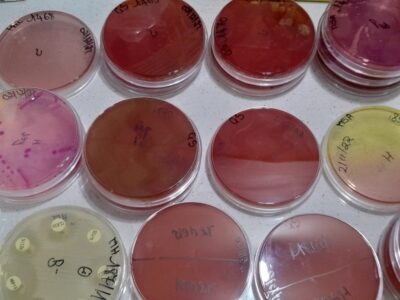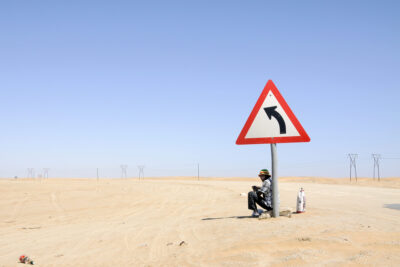Main content
Snake bite has long been recognized as a serious health problem in many tropical regions. It typically affects populations in remote areas who have limited access to health services, while adequate treatment with antivenom is often not available. For this reason, snake bite was recognized by WHO as a neglected tropical disease and was included in 2009 on the list of NTDs under ‘other’ conditions.
Epidemiology
Despite the wide variation in occurrence, snake bite is most common in the resource poor setting of tropical countries of Africa, Asia and Latin America, with few reliable data on incidence. Most victims in the rural tropics rarely go to hospital, preferring potentially harmful treatment by traditional healers and are thus lost for the official statistics. Snake bite is mainly a rural and occupational hazard, with farmers, plantation workers, herdsmen, hunter gatherers and military personnel at greatest risk. Children are frequently bitten due to their inquisitive nature while more recently travellers are increasingly reported to be subject to snake bite as numbers of travellers increase and destinations are becoming more adventurous and remote. Most bites occur in the daytime and involve the foot or the lower leg as a result of accidentally disturbing a snake; snakes are normally not aggressive by nature.
Globally an estimated 5.4 – 5.5 million people are bitten by snakes each year, with more than 2.5 million envenomings (1,2), resulting in about 400,000 amputations (3) and 20,000 to 125,000 deaths (1,2). This high death toll reflects the population at risk in rural areas in tropical countries who lack access to proper medical care and treatment.
Venomous species are widely distributed, except at altitudes above 5,000 meters, in polar regions and in most islands of the western Mediterranean, Atlantic, Caribbean and Pacific. There are no venomous snakes in Madagascar, New Zealand, Ireland, Iceland and Chile. Sea snakes exist in the Indian and Pacific oceans and in river estuaries (New Guinea) and lakes (Philippines, Cambodia, Solomon Islands).
Worldwide, of the 2,700 species of snakes, about 300 belong to the families of venomous snakes, that have one or more pairs of enlarged teeth in the upper jaw -the fangs- which penetrate the skin of their prey or victim and enable them to inject venom into the tissues. The venom is produced by two venom glands, one at each side of the head surrounded by muscle, which on contraction pushes the venom out of the gland to reach the venom duct and the canal or groove of the fangs. Only about 200 species are known to have caused death or permanent disability after biting humans. Constrictor snakes kill their prey by strangulation and are potentially dangerous to man (giant constrictors, family Boidae, in the New World, and pythons in the Old World). They do not have fangs.
Classification of venomous snakes
Most venomous snakes belong to the families of Elapidae or Viperidae. To the Elapidae belong the African and Asian cobras, African mambas, Asian kraits, American coral snakes, Australasian terrestrial venomous snakes and sea snakes, with relatively short anterior and permanently erect fangs. They cause neurotoxicity and usually minimal signs at the bite site (with the exception of some cobras which also cause necrosis). Sea snakes cause myotoxicity and subsequent paresis.
In vipers (viperids of the subfamily Viperinae) and pit vipers (crotalids of the subfamily Crotalinae), the fangs are mostly large and mobile. Except in the Pacific Australasian area where vipers do not naturally occur, they are much more common than elapid snakes. The bite of a member of the Viperidae generally leads to local swelling, shock, bleeding and non-clotting blood. The Old World vipers, subfamily Viperinae include European, African and Asian vipers and adders. Pit vipers possess a heat-sensitive pit organ behind the nostril used for orientation. They comprise rattle snakes, moccasins, South American lance-head vipers and Asian pit vipers.
There is also a small group of venomous colubrids (Colubridae), of which the boomslang in southern Africa and the Southeast Asian red-necked keel-back snake are the most common examples of medical importance. They have short immobile fangs placed posteriorly in the mouth. The African and Middle Eastern burrowing asps, stiletto- or side stabbing snakes (family Atractaspididae) have long front fangs impaling their victims by a side-swing motion, some with fatal envenomation, but these snakes are of less epidemiological importance.
Clinical features
Snake venoms are rich sources of pharmacologically active peptides and proteins, and also non protein toxins and other small molecules. They vary by species, subspecies, and even geographic variant level, inducing a wide range of clinical signs and symptoms. Therefore the pattern of envenoming depends upon the biting species and is further the result of other factors such as the geographical environment, season, and ageing. Only 50-70% of patients bitten by venomous snakes develop signs of envenoming, most likely as the result of a defensive bite without injecting venom or of a dry bite because the venom has recently been used.
The black mamba. It is one of the most dangerous snakes in Africa. Its venom causes neurotoxicity leading to convulsions and respiratory arrest and may cause death in 50% of patients within hours.
The major clinical effects following snakebite are as follows.
Local effects: pain and swelling or formation of blisters on the bitten limb, with possible necrosis at the site of the wound.
Systemic effects:
- non-specific: autopharmacological symptoms immediately after the bite, like vomiting, headache, collapse, sweating, anxiety.
- specific signs like: 1) non-clotting blood and bleeding from gums, old wounds, sores, 2) neurotoxicity (ptosis, bulbar palsy and respiratory paralysis), 3) rhabdomyolysis (muscle pains and black urine), 4) shock, hypotension, usually resulting from hypovolaemia, which might lead to acute renal failure.
In case of envenomation by a spitting cobra which can eject the venom from a distance of a few meters, the venom may affect the eye, causing intense local pain and severe conjunctivitis with leucorrhoea.
First aid
First aid can be carried out only by bite victims themselves or bystanders, using materials that are immediately available. Many symptoms following snake bite are caused by anxiety. Victims need to be reassured. The limb has to be immobilized as moving it may increase absorption of venom. Harmful manoeuvres such as cutting, suction or tourniquets must be avoided. A pressure bandage should be considered in regions where snakebite does not cause tissue necrosis, particularly if rapid transport to hospital is not possible. The victim has to be transported as soon as possible to a medical facility for professional help, in recovery position because vomiting may occur.
Clinical management
Patients are observed in hospital for 12-24 h, even if signs of envenoming initially are not present. Tetanus prophylaxis should be given. Immediate antibiotic prophylaxis is only required in case of signs of secondary infection at the place of the bite. Careful monitoring of vital signs and signs of envenomation is crucial.
Antivenom is only indicated for signs of systemic envenoming and/ or if swelling of the limb extends over more than half the bitten limb. Monovalent or monospecific antivenom is used for a single species of snake. However, in rural areas, the identification of the snake is often not possible, and moreover these expensive antivenoms are not available. Even polyvalent products for a number of regionally present snakes are worldwide in short supply, are frequently of poor quality and still too costly in the situation where they are most needed. Antivenoms are produced by immunizing large animals, usually horses. Therefore administration of antivenom has a high risk of developing severe anaphylaxis and it needs to be done in an adequate medical environment. In addition to antivenom treatment supportive medical care (e.g. respiratory support and renal replacement therapy) is regularly needed.
Prevention
In rural tropical areas, eradication of venomous snakes is, for ecological reasons, no option. Community education to reduce the risk of bites is the best approach, based on knowledge of circumstances in which bites most occur. Wearing proper boots or shoes and ideally long trousers are essential to avoid snake bites. Carrying a torch at night is useful, as is stepping hard on the ground when walking (because snakes are sensitive to vibration). Sleeping on the ground without a sewn-in ground sheet should be avoided and camp beds are recommended. Bed nets are also protective.
Acknowledgement
I am grateful to Ed Zijlstra for critically reviewing the manuscript.
References
- Chippaux JP. Snake-bites: an appraisal of the global situation. Bull World Health Organ 1998; 75:515-24.
- Kasturiratne A, Wickremasinghe AR, De Silva N, et al. The global burden of snakebite: a literature analysis and modelling based on regional estimates of envenoming and deaths. PLoS Med 2008;5:2218.
- Mion G, Olive F. Les envenimations par vipéridés en Afrique Noire. In: Saissy JM, ed. Réanimation tropicale. Paris: Arnette, 1997:349-66.
- Warrell DA. Snake bite Lancet 2010; 375:77-88.



















































